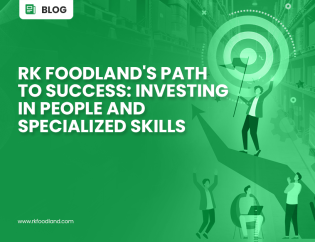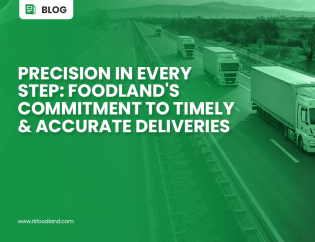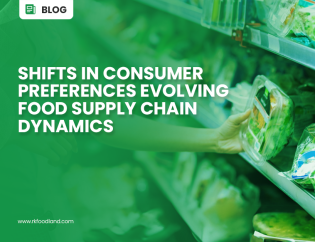
The food service industry is greatly influenced by the trends in consumer demands and fluctuates based on their needs. The convenience of packaged foods, quicker food preparation, economical and healthier choices, and resonating with the local palate are the critical driving factors of consumption patterns.
This article explores demand planning in the food service industry, its importance, and various parameters.
Why is demand planning important for the food service industry?
The ability to accurately predict future demand is a key driver for the growth of a food service business. Check out the below challenges in the food service sector to understand why it is necessary to implement demand planning.
The food service industry faces unpredictable challenges compared to any other industry. The dynamic changes are brought by the consumption behavioral patterns, perishability of food products, socio-economic and environmental issues, new safety and food regulation policies, and social media influence. The COVID-19 pandemic is an example of how the food service industry could be affected abruptly, bringing global supply chain disruptions.
These factors create an imbalance between supply and demand, leading to stockouts or surplus goods in the inventory levels. This subsequently leads to tons of food wastage or damage to the food brand’s reputation in the event of failure to meet customer demands.
Demand planning is a crucial supply chain management process. It helps plan the business’s operations to eliminate future risks and meet the approaching customer needs.
Demand planning plays a vital role in the food service industry or HORECA businesses. It enables them to reduce uncertainties and produce the right amount of food without the issues of wastage, low inventory levels, perishability, etc.
What are the key parameters in demand planning?
Leveraging the correct historical data
In order to arrive at accurate future predictions of customer demand, it is imperative to leverage the right historical data. Applying data that is too old might not correlate with the current trends. Also, not considering enough data might produce inaccurate results. It is recommended that the food service industry consider at least the last 24 months of data for demand planning to find the seasonal demand behaviour.
Consumption
The food service sector must assess historical consumption data rather than sales data. Consumption data gives the actual picture of what the customers utilize and the true market potential of a product, while sales data depicts how much demand was met. You can view the gaps in demand and supply by analyzing historical stockout data. It can eliminate the occurrence of future stockout scenarios.
Considering internal and external factors that affect sales.
Certain internal factors like marketing, resources, suppliers, use of technology, etc., and external factors, including environmental and socio-economic factors, competitors, etc., influence the sales in a food service company. These internal and external factors are among the several key parameters to consider during demand planning.
Seasonality
Certain foods do not have a consistent demand throughout the year. It varies according to the seasonal availability, and the demand plummets or declines accordingly. If the seasonal demands are not considered in the initial stages, it could disrupt the entire supply chain and, in turn, affect the business profits.
Demand planning helps predict the sudden spikes in seasonal sales due to weather conditions, festivals, or special occasions. It enables the maintenance of sufficient stock levels of products during the peak season.
Location
Location is another essential parameter in demand planning for the food service sector. Predicting future demands based on the customer location and warehouse location can improve logistics and order fulfillment efficiency. Some cases require the setting up of decentralized inventories across many locations to cut down on transportation costs and reduce the risk of perishability.
How does demand planning help address the food service industry challenges?
According to Food and Beverage Insider, there is a need for agile demand planning in the food industry. To know how demand planning can help overcome the issues in the food service sector, check out the points below.
- Demand planning helps to know when, where, and what quantity of product the customer demands.
- Demand planning also enables the companies to achieve an optimized inventory, reduced loss of sales, lowered food wastage and callbacks, efficient order management, and better product scheduling.
- It provides supply chain visibility and transparency and consolidated, actionable insights.
- Better demand planning and forecasting subsequently lead to better logistics and improved business processes that help mitigate risks and generate more revenue.
The food service industry can strategically plan their actions and make confident decisions by leveraging valuable data insights offered through demand planning. If you are a food service business looking to balance your supply and demand loads, we are here to help.
RK Foodland is a leader in supply chain management and demand planning with decades of industry experience. We have devised a precise demand planning framework, particularly for the Indian food service market. It predicts local consumption patterns and offers meticulously planned action steps to increase profitability.
To re-imagine your demand planning strategy, connect with out experts now.









